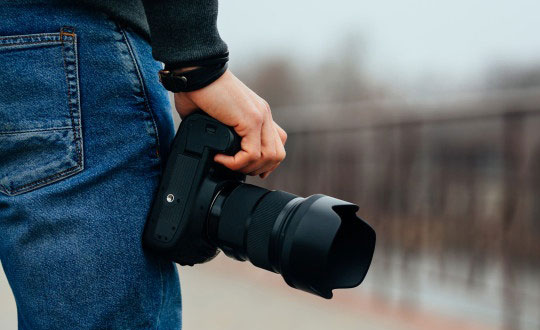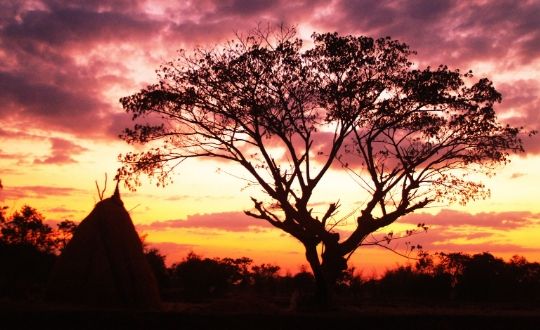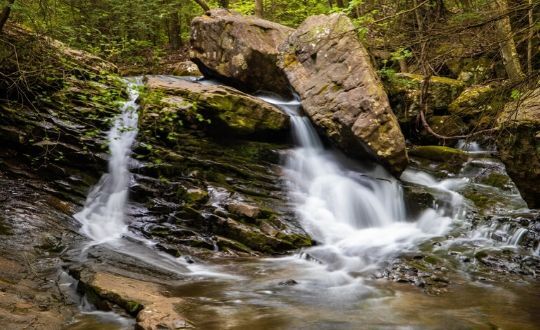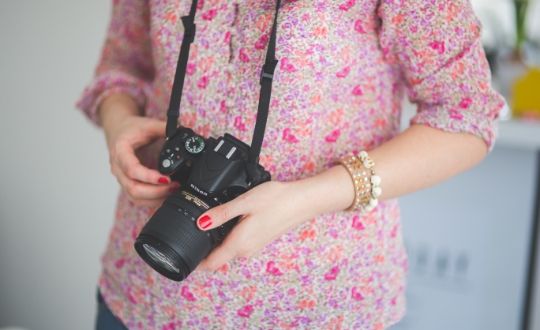Architecture has been a popular photography subject for many years.
Architecture is an interesting subject to photographers for a variety of reasons. For one, it offers great lines, curves, symmetry, and shape worth capturing in an image.
Beyond that, architectural style communicates a great deal about a setting. The way buildings look in a given area says a lot about the place being photographed. Often, just by looking at a specific style of home, church, or apartment building, people can make an accurate guess as to where that structure is located. Using architecture as a subject is, therefore, a helpful way to communicate and tell a story about setting and place through your images.
What It Architecture Photography?
Architecture photography encapsulates photos you might take of any type of building or structure. This could include religious buildings, skyscrapers, cityscapes, old brownstone apartment buildings, or classic residential homes. Structures such as bridges or fountains are included as well.
Architectural photography additionally includes not just building exteriors, but interior design. So for those interested in taking pictures inside homes and apartments, real estate photography is an interesting and potentially lucrative industry worth pursuing.
Are There Careers In Architecture Photography?
While photographing beautiful buildings and structures around the world is probably one of the most common subjects for hobbyists, that doesn’t mean that there aren’t serious careers to be enjoyed within this genre as well.
Architecture firms, interior design businesses, and real estate companies are all very common examples of clients looking for professional architecture photographers.
For example, a real estate agent struggling to garner interest in a valuable property might hire a home staging professional to nicely stage the home for clients, then bring in a seasoned real estate photographer to capture more captivating photos of the home to include in online ads and listings. With such a large majority of real estate advertising being done online anymore, agents rely on quality photography to help them get clients in the door. That’s where a well-trained architecture photographer can help.
How Much Are Architecture Photographers Paid?
Like most other photography specialists, the majority of architecture photographers do not make a predetermined yearly salary the way a full time 9-5 professional might. Instead, more often a photographer is paid a certain amount of money for each project they’re hired to complete. And when it comes to the photography industry, that dollar amount you charge might also depend a lot on where you live, according to an April report from Forbes.
Some architecture photographers charge a flat rate for an assignment- so if an architecture firm would like you to deliver a folder of images of a new building they constructed, you might charge a rate for that gig. This all depends on how much time you will need to spend planning, shooting, then completing post-prediction, and every photographer charges differently. If you’re not sure how much to charge for your photography, you should consider reaching out to your IPE mentor for help putting together some numbers.
Where Can I Study Architecture Photography?
IPE’s online professional photography course is meant to train photographers who are specifically looking to not only learn how to use a DSLR camera expertly, but to turn their photography skills into a career. In Lesson 5, you will specifically go over the field of architecture.
You’ll follow along as IPE mentor interviews a professional architectural photographer. They will discuss how Cooper got started in the business, then we will walk through a portfolio of his most successful work as we talk about the best practices he employs in his work. From there you will study the most practical equipment options available to architecture photography enthusiasts, and the most effective times to use each for interior and exterior architectural photography. If this sounds like a program you would be interested in, click here for more information or call +91 94292 04284 to speak with an IPE mentor about the class.
Category: photography
3 Reasons You Should Go to Photography School
Posted on by IPE

You’ve always been interested in photography and the art of taking great pictures. You admire great shots taken by others and often find yourself scrolling impressive Instagram or Twitter feeds of professional photographers who inspire you. Maybe you already own a digital camera or maybe you’re still playing around with cell phone photography- but you know you have an eye for creative, compelling picture taking.
Does this sound like you? You should really consider honing your skills with more formal training and guidance from an industry professional. Whether full time or freelance, there are great careers to be found in the photography industry, and you could pursue your talent as a part time source of income. Even if you’re not interested in monetizing your skills and earning income, you could also find it extremely rewarding to take an online photography course that will help you sharpen your skills. If you’re on the fence, consider the following three reasons why you should go to photography school.
It’s Rewarding.
Pursuing a hobby or interest through an online course can be an extremely rewarding pursuit. Many students at the Institute for Photography Excellence work full time jobs during the week as doctors, schoolteachers, accountants, etc..
To them, nights and weekends logging into their online photography course to read some new lessons, watch an instructional video or two and take a few test shots on their camera to try out a new technique or skill is a way to unwind and relax while learning something creative, interesting and new.
It’s Flexible.
At a school like IPE, you don’t have a set class schedule or assignment due dates, meaning you are able to work at your own pace. So if you’re on the fence about studying photography as a side project or potential career option, keep in mind that you won’t have to put your schedule on hold in order to do so.
Maybe on week nights you want to do some reading on your iPad in bed before you go to sleep. Or maybe you spend your Saturday mornings on the couch enjoying a cup of coffee while you watch your photography instructional videos and make notes before your quiz.
It’s Affordable.
At the Institute for Photography Excellence, part of our mission is to make photography school more accessible- meaning we strive to make our programs affordable enough to fit in every student’s budget.
If you’re on the fence about pursuing your photography education, stop putting it off. From flexible payment plans to a self-paced format, IPE is here to do whatever we can to make learning photography more accessible and simple for all students.
Photograph Trees In Your Own Backyard
Posted on by IPE

If you’re staying home and social distancing because of the pandemic, you might be looking for ways to keep busy and stay creative. Many of our students are reaching out to share ideas and ways to stay inspired during times when it’s not as easy to get in the car and drive to interesting locations to practice our photography.
While staying home definitely limits us in the things we might be used to photographing, and although we may need to take a break from those activities and travels for the time being, don’t get discouraged. There are still opportunities for you to practice your photo taking skills from the comfort of your own neighborhood.
If you have trees in your backyard, practicing your tree photography is a great way to get some nature and landscape photography practice under your belt while keeping your social distance. If you don’t have trees in your backyard, be sure to wear your mask and take CDC Covid19 precautions and go for a little walk around your neighborhood to find some trees you can use as a subject for this exercise.
Getting started, try to pick a tree that looks most compelling to you and one that you’d most like to use as your subject for this activity. Whether it’s a large, colorful tree in your front yard lush with pink floral blooms, or a large old oak up your street that you’ve always admired. Your first step is to make a decision about what you would like to focus on as the chief subject of your composition.
Get Creative With Your Settings
From there, try starting with an aperture of f/22 if you are interested in keeping the entire image in focus – the tree itself, the foreground and the setting behind it. Using f/22 as an aperture starting point is a good method to employ if you’re looking to keep the entire image equally in focus.
If you are interested in taking a different approach and creating more of a bokeh effect instead of keeping your entire image in perfect focus, try an aperture of f/8. By using this setting, you will be able to achieve the aesthetic of gentle, surrounding, out-of focus blur in your image.
Explore Nature and Landscape Photography
If nature and landscape photography is a genre that specifically intrigues you, and you find yourself interested in doing more outdoor photography exercises like this one in more comprehensive detail, you should consider signing up for a formal photography course.
The Institute for Photography Excellence offers a self-paced, nature and landscape photography class you can take entirely online. In this program, professional photographers explain the nuances of composition, exposure and framing so you can work to take better pictures of wildlife, flowers, landscapes and more. For more information on how to get started in this online course, call +91 94292 04284 or click here.
How to Find Motivation in a Pandemic
Posted on by IPE

As an IPE student in the Photojournalism Course, I appreciate the convenience an online education offers. I find time to study and complete projects between a busy work schedule and home life. Rarely am I stressed over coursework and due dates, mainly because I set my own. However, I, like many others, have been lacking motivation during the pandemic. It’s been a challenge to get those creative juices flowing and really dive into art. Even my program’s project prompts have become an obstacle as I struggle to move freely and come up with ideas in this “new normal.”
However difficult it may be, I’m finding tips and tricks that help me get motivated and complete my coursework. Here are some tips that may help you, too!
Do what energizes you
Sitting there racking your brain and hoping your next big idea comes to you isn’t always the answer. For me, I’m rarely productive when I try too hard to come up with something great for a project or photo session. Taking time to unwind and do other things I enjoy is part of my creative process. When I feel particularly stressed over coursework, or work in general, I focus my energy on something else. Cooking and baking calms me and allows me to de-stress. Try your hand at a new recipe or make something delicious to enjoy with family or friends. Watercolor also relaxes my brain. While I’m not the best painter, the simple act of sitting down and creating whatever pops into my imagination always makes me feel better. If you have a hobby, spend some time embracing it. Once I’ve taken some time for myself, I go back to work with a clear, refreshed mind. Think about what gives you a sense of peace and when you’re feeling stressed step away and do what you enjoy!
Get outside
Taking a walk or being in nature is a great way to clear your head and increase your creativity. Not only is walking good for your body, but it’s good for your mind too. Being present and focusing on where you are can inspire you and may be the key to your next project. Maybe a walk in your neighborhood made you notice something beautiful that you want to capture. Or a jaunt in nature may inspire you to take a direction you’ve never thought of before. Take your camera along! You never know when creativity will strike. The photo featured in this article was taken by me during a hike.
Draw inspiration from others
If there’s a photographer you admire, take a look at their work. Finding inspiration from others may boost your creativity and give you fresh new ideas. Instagram is another great place to find inspiration. For example, IPE’s Instagram account often features students’ work and may motivate you to get your photos featured. Asking for feedback is another great way people may inspire you. By asking a friend or family member what they think of a photo project idea or of your latest piece may enable you to take the constructive feedback they give and make your work even better.
Be kind to yourself
Remember to be kind to yourself. You’re furthering your education and going through a pandemic. There’s no playbook on how to do this. Do what feels right for you. If unplugging and stepping away from your coursework makes you feel better, then do it. Remember that the motivation to photograph may not always be there, and that’s okay. Take the time you need to regroup and come back to photography reenergized.
Covid19 Precautions for Photographers
Posted on by IPE

Throughout the past several months, many photographers have expressed that they are struggling to stay inspired and find new subjects to photograph, as they are trying to adhere to CDC guidelines regarding social distancing, sheltering in place and staying safe and healthy during the Covid19 Pandemic.
Although staying home and keeping our distance from others does limit us in some ways when it comes to the photography exercises we might have worked on in the past compared to what we can safely work on now, that doesn’t mean that we need to hang up our cameras and put creativity on hold altogether. However, the Institute for Photography Excellence would like to provide some simple tips for staying as safe as possible as you practice your photography during a time when cleanliness is especially important.
Keeping Your Gear Clean
It goes without saying that first and foremost, in order to stay as safe as possible you need to adhere to the latest Covid 19 safety guidelines being shared by the CDC.
Beyond that however, you might be interested in tips on keeping your photography gear clean after each session when you’ve been touching your device and making adjustments with bare hands. Getting started, you can wipe down the body of your camera. If you see any stains on your camera body, try to gently use a toothbrush to scrub off stubborn spots. Make sure that you are especially careful around any leather surfaces- you don’t want to scrub away the glue that holds the leather pieces in place.
After you clean the body, you can clean the lens and the sensor as well. For this, you will need a rubber bulb blower, non-abrasive, lint-free wipes and lens cleaner. You should be able to order these items from any camera shop (if you are an IPE student, be sure to shop Adorama for exclusive student discounts). Make sure you can work on a clean surface in a space with good lighting.
Getting started, gently begin to dust any dirt or small particles that might have collected on your lens. Make sure to be as gentle as possible in order to avoid scratching the lens itself. This is a great time to use the bulb blower tool as well, so you can softly blow air onto the lens to remove dirt while avoiding touching the lens altogether. After you’ve done your best to gently clean any particles off, you can use a lens cleaner and your non-abrasive, lint-free wipes to gently cleanse the lens as well.
Work at Home
Finally, remember that there are plenty of photography projects you can work on without leaving your own yard, or even your home. While dirt and dust dirtying our cameras is inevitable no matter where we’re using them, if you’re worried about your gear getting contaminated with germs from other people, staying home is your best bet. Some fun options for at-home photography projects include:
- Close-Up Photography: Practicing your macrophotography is a simple exercise you can try indoors or in your backyard. You could use a piece of fruit, a leaf, or a flower as a subject for this composition. Here’s a macrophotography tutorial to help you get started.
- Water Droplet Photography: This is another exercise you can complete without needing to go in public or interact with other people. Staying inside your home, you could use a glass of water for this. If you’re headed out to your yard, you could work with water from a pool, sprinkler, or your garden hose. This water droplet photography tutorial should help!
- Bird Photography: Whether you’re in a city on the lookout for a flock of pigeons or in your backyard waiting on the perfect shot of a red cardinal, bird photography is another great genre you can explore while maintaining your distance from crowds of people.

